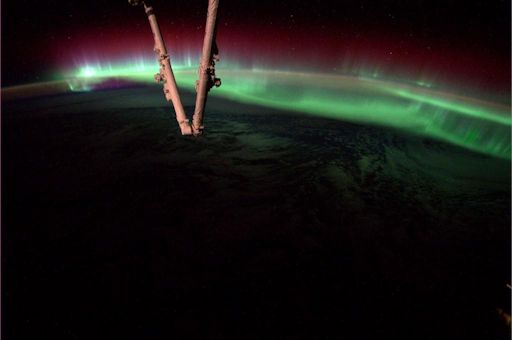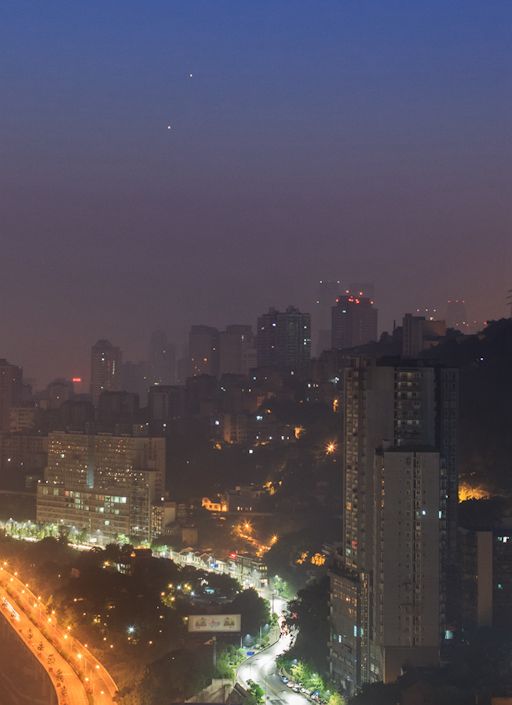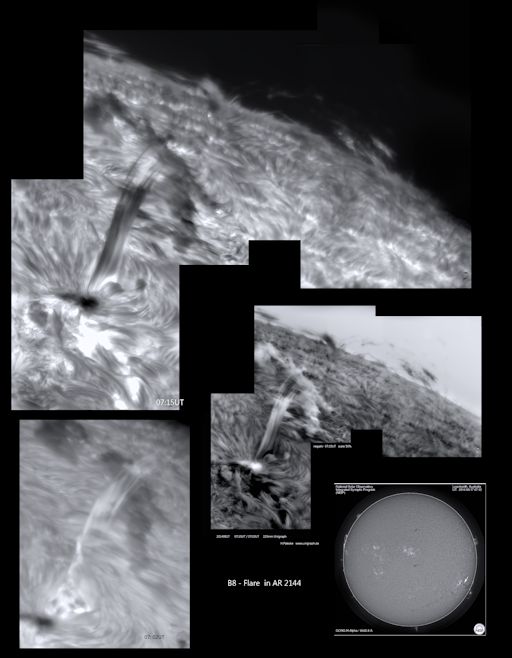New from Spaceweather.com: Edge of Space Advertising. Send your product or message to the edge of space for a down-to-Earth fee. Profits support student space weather research. Email Dr. Tony Phillips for more information. | | |
GEOMAGNETIC STORM, AURORAS SEEN FROM SPACE: A moderate (G2-class) geomagnetic storm that erupted following a CME strike on August 19th is subsiding now. At its peak, the storm sparked auroras around both poles visible from the ground and from space. Astronaut Reid Wiseman took this picture from the window of the International Space Station:

"Never in my wildest dreams did I imagine this," tweeted Wiseman (@astro_reid). "Unbelievable."
Around the Arctic Circle where the midnight sun has overwhelmed auroras since Spring, observers caught their first glimpse of Northern Lights in months "At one point a massive corona unfolded just over my head!" reports Alexander Kuznetsov from the Finnish Lapland. "It was a great season opener," added Pekka Hyytinen of Tampere, Finland. "I also caught a lightning strike in one of my photos."
Solar wind conditions are unsettled but calming as Earth passes through the wake of the CME. NOAA forecasters estimate a waning 30% to 15% chance of more geomagnetic storms during the next 24 hours. Aurora alerts: text, voice
Realtime Aurora Photo Gallery
MORNING SHOW CONTINUES: Light pollution? No problem. The morning conjunction of Venus and Jupiter is bright enough to see through the worst urban glare. Jeff Dai sends this picture from metropolitan Chongqing, China:

"I woke up at 5 AM to enjoy this celestial dawn above the cityscape," says Dai. "It was gorgeous."
Dai took the picture on August 20th, two days after Venus and Jupiter were barely 0.2o apart. Many observers have stopped looking now that the planets are separating, but as Dai's photo shows, they are still a beautiful pair. So set your alarm for dawn: the morning show continues. A date of special interest is August 23rd when the crescent Moon joins the planets to form a must-see celestial triangle. A video from NASA previews the meeting.
Realtime Conjunction Photo Gallery
THE POTENCY OF "WEAK" FLARES: For the past month, the sun has been mostly quiet with only a smattering of C- and B-class solar flares. As flares go, these are puny. In fact, when the sun is crackling with flares no stronger than B-class, we often say that "solar activity is very low."
But is it, really? A B-class solar flare packs a bigger punch than is generally supposed. Consider this specimen photographed by Harald Paleske of Weißenfels/ OT Langendorf, Germany, on August 17th:

"This was a B8-class flare in sunspot AR2144," says Paleske. "Despite poor seeing, I was able to capture a high-resolution view of the explosion using my 225mm Unigraph solartelescope."
The violence frozen in these snapshots belies the idea that this was a weak explosion. And indeed it was not. A typical B-class solar flare releases as much energy as 100 million WWII atomic bombs. Only on the sun, which is itself a 1027 ton self-contained nuclear explosion, would such a blast be considered puny.
So the next time you hear that the forecast calls for "low solar activity," remember ... everything is relative. Today's forecast, by the way, calls for low solar activity with only a 10% chance of M-class solar flares.
Realtime Comet Photo Gallery
Realtime Meteor Photo Gallery
Realtime NLC Photo Gallery
Every night, a network of NASA all-sky cameras scans the skies above the United States for meteoritic fireballs. Automated software maintained by NASA's Meteoroid Environment Office calculates their orbits, velocity, penetration depth in Earth's atmosphere and many other characteristics. Daily results are presented here on Spaceweather.com.
On Aug. 20, 2014, the network reported 46 fireballs.
(37 sporadics, 4 kappa Cygnids, 4 Perseids, 1 Southern delta Aquariid)

In this diagram of the inner solar system, all of the fireball orbits intersect at a single point--Earth. The orbits are color-coded by velocity, from slow (red) to fast (blue). [Larger image] [movies]
Potentially Hazardous Asteroids (
PHAs) are space rocks larger than approximately 100m that can come closer to Earth than 0.05 AU. None of the known PHAs is on a collision course with our planet, although astronomers are finding
new ones all the time.
On August 20, 2014 there were 1494 potentially hazardous asteroids.
Notes: LD means "Lunar Distance." 1 LD = 384,401 km, the distance between Earth and the Moon. 1 LD also equals 0.00256 AU. MAG is the visual magnitude of the asteroid on the date of closest approach. | | The official U.S. government space weather bureau |
| | The first place to look for information about sundogs, pillars, rainbows and related phenomena. |
| | Researchers call it a "Hubble for the sun." SDO is the most advanced solar observatory ever. |
| | 3D views of the sun from NASA's Solar and Terrestrial Relations Observatory |
| | Realtime and archival images of the Sun from SOHO. |
| | from the NOAA Space Environment Center |
| | the underlying science of space weather |

